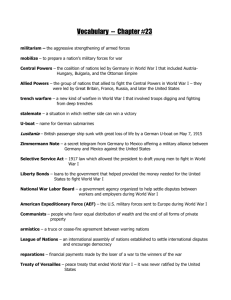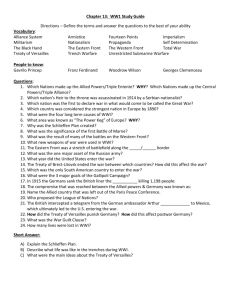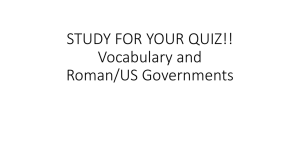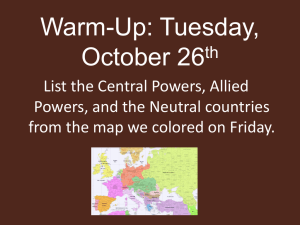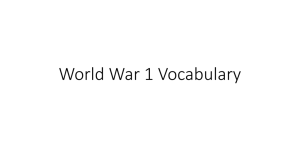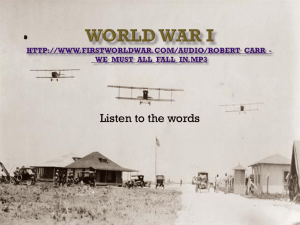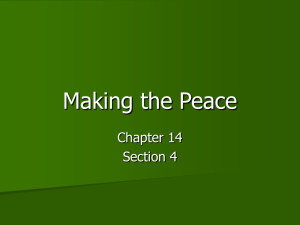File - Ms. Greathouse
advertisement
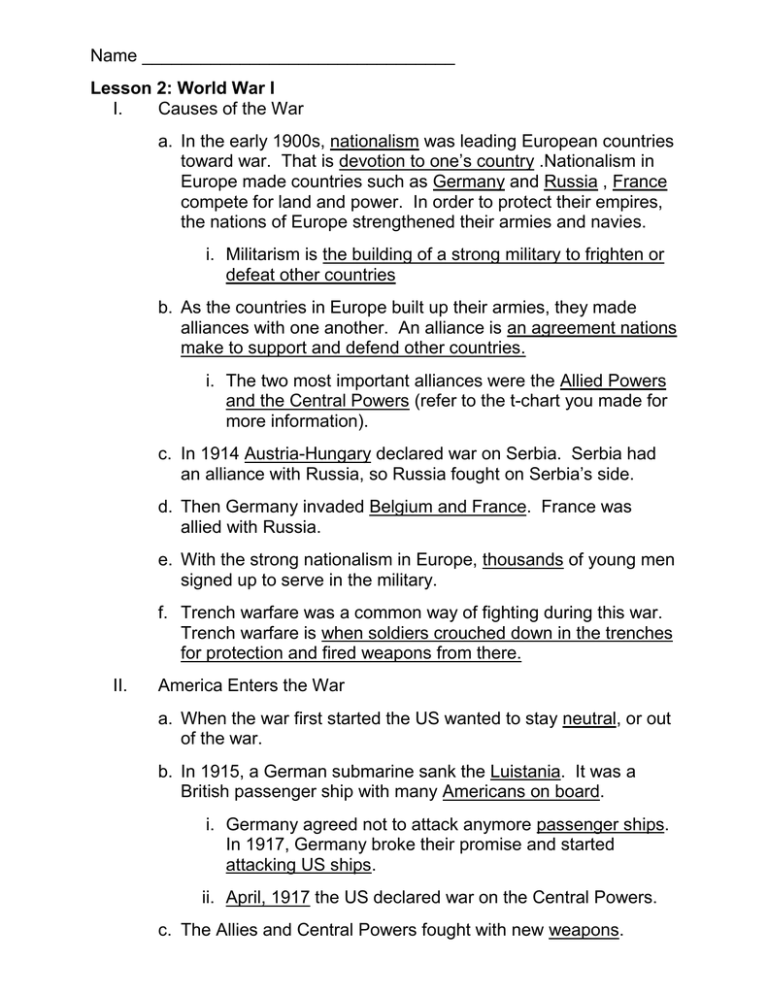
Name ________________________________ Lesson 2: World War I I. Causes of the War a. In the early 1900s, nationalism was leading European countries toward war. That is devotion to one’s country .Nationalism in Europe made countries such as Germany and Russia , France compete for land and power. In order to protect their empires, the nations of Europe strengthened their armies and navies. i. Militarism is the building of a strong military to frighten or defeat other countries b. As the countries in Europe built up their armies, they made alliances with one another. An alliance is an agreement nations make to support and defend other countries. i. The two most important alliances were the Allied Powers and the Central Powers (refer to the t-chart you made for more information). c. In 1914 Austria-Hungary declared war on Serbia. Serbia had an alliance with Russia, so Russia fought on Serbia’s side. d. Then Germany invaded Belgium and France. France was allied with Russia. e. With the strong nationalism in Europe, thousands of young men signed up to serve in the military. f. Trench warfare was a common way of fighting during this war. Trench warfare is when soldiers crouched down in the trenches for protection and fired weapons from there. II. America Enters the War a. When the war first started the US wanted to stay neutral, or out of the war. b. In 1915, a German submarine sank the Luistania. It was a British passenger ship with many Americans on board. i. Germany agreed not to attack anymore passenger ships. In 1917, Germany broke their promise and started attacking US ships. ii. April, 1917 the US declared war on the Central Powers. c. The Allies and Central Powers fought with new weapons. i. Soldiers used machine guns that could shoot hundreds of bullets per minute, they threw hand grenades and fired cannon shells miles through the air. ii. Submarines sank ships in the Atlantic Ocean and airplanes- were used to drop bombs. Lesson 3: Americans and the War I. The Home Front a. The soldiers needed many things to fight World War I. Businesses and workers made huge effort to support the soldiers. i. To help create more supplies for soldiers, the government set limits on the amount of some goods civilians could have. These limits are called rations ii. To get civilians to help with the war the government used propaganda That is information used to shape people’s thinking. iii. During the war, many men were overseas fighting. Employers needed to find workers to fill their factories. 1. African Americans left the South to work in northern factories. 2. Many women took jobs that had been open only to men 3. Many people changed their opinion of what women could do. Women’s suffrage, or the legal right to vote, , became a cause for demonstrations. 4. In 1919, the Senate passed the 19th amendment giving women the right to vote. II. The War Ends a. When the US joined the war in 1917 the Allied and Central Powers were exhausted from 3 yrs of fighting.. b. About 1 Million US soldiers went to France. i. The extra strength helped the Allies to win important battles. c. The Central Powers eventually realized they could not win and signed an armistice That is an agreement to stop fighting. d. In1919, the leaders of the Allied countries met in France to write a treaty. i. The treaty to end the war was name the Treaty of Versailles ii. The United States was represented by President Woodrow Wilson iii. Many countries blamed Germany for the war and wanted to punish them through the treaty. 1. Some of the things Germany had to do because of the treaty included losing colonies, giving land to France and paying money to Allied countries iv. The US did not want to punish Germany, but still supported it because it created the League of Nations. Its purpose was to solve problems peacefully and protect one another war started. v. Senate did not approve the treaty because they thought the US would be called into future wars. vi. People began to believe in isolationism. Isolationism is when people want to stay out of world events.

